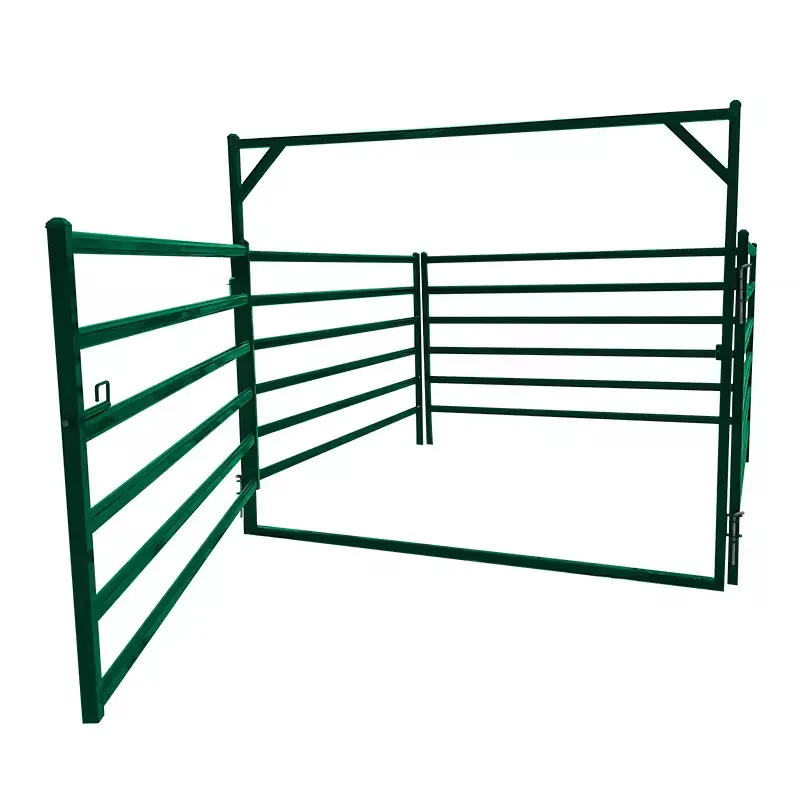
- Afrikaans
- Albanian
- Arabic
- Armenian
- Azerbaijani
- Basque
- Belarusian
- Bengali
- Bosnian
- Bulgarian
- Croatian
- Czech
- Danish
- Dutch
- English
- Esperanto
- Estonian
- Finnish
- French
- Galician
- Georgian
- German
- Greek
- hawaiian
- Hindi
- Hungarian
- Indonesian
- irish
- Italian
- Lao
- Latvian
- Lithuanian
- Luxembourgish
- Macedonian
- Maltese
- Myanmar
- Norwegian
- Polish
- Portuguese
- Romanian
- Russian
- Serbian
- Slovak
- Somali
- Spanish
- Swedish
- Thai
- Turkish
- Turkmen
- Vietnamese
Dec . 11, 2024 10:40 Back to list
Durable Fencing Solutions for Cattle Management and Pasture Protection
The Importance of Field Fencing for Cattle Ensuring Safety and Productivity
When it comes to cattle farming, one of the most crucial aspects that farmers must consider is the importance of proper field fencing. Field fences serve not just as a physical barrier but as an essential tool for managing livestock, maintaining their safety, and enhancing overall productivity on the farm.
Protecting Livestock and Property
First and foremost, field fencing acts as a protective barrier for cattle. Cattle are naturally curious animals, often prone to wander off if given the opportunity. Without adequate fencing, they can easily escape into roads or neighboring properties, leading to potentially dangerous situations—both for the animals and motorists. Accidents involving roaming livestock can result in serious injuries and costly damages. By constructing solid field fencing, farmers can ensure that their cattle remain safely confined within designated grazing areas, reducing the risk of accidents while minimizing liability concerns.
Moreover, effective field fencing protects against predators. Depending on the locale, cattle can be at risk from various predators, including coyotes and stray dogs. A sturdy fence can deter these animals, allowing cattle to graze peacefully without the looming threat of predation. This fosters a healthier herd and contributes to the overall welfare of the cattle.
Enhancing Grazing Efficiency
Field fencing also plays a crucial role in managing grazing patterns effectively. By utilizing different grazing paddocks separated by fences, farmers can implement rotational grazing techniques, which are beneficial for both the cattle and the pasture. Rotational grazing allows for improved pasture health, as it prevents overgrazing and enables grass to recover between grazing sessions. This practice not only maintains the quality of the forage but also promotes soil health, leading to a more sustainable farming operation.
Additionally, through controlled grazing with the use of fencing, farmers can optimize the nutritional intake of their cattle. By directing cattle to graze on specific areas of the pasture, they can ensure that their animals receive a balanced diet composed of various plants, which is essential for their growth, milk production, and overall health.
field fence for cattle

Choosing the Right Fencing Material
Selecting the appropriate fencing material is vital for ensuring the longevity and effectiveness of field fencing. Farmers have multiple options, including barbed wire, high-tensile wire, electric fencing, and wooden posts. Each type of fencing has its own advantages and disadvantages. For instance, barbed wire is cost-effective and durable but may not be the best choice for young or smaller cattle, as they can easily injure themselves. On the other hand, electric fencing can be an excellent deterrent for cattle and predators alike, though it must be maintained regularly to ensure it remains effective.
When deciding on the type of fence to install, farmers should consider factors such as the size of their cattle, the terrain of their land, and potential wildlife threats. A hybrid approach, combining different types of fencing, may also be beneficial to create a more secure and adaptable environment.
Legal and Ethical Considerations
Besides the practical implications of cattle fencing, there are legal and ethical considerations to take into account. In many regions, farmers are legally required to contain their livestock to prevent them from straying onto public roads. Failure to comply with these regulations can lead to fines and legal consequences. Ethically, farmers have a responsibility to provide safe living conditions for their animals, which includes proper fencing to protect them from harm and ensure their well-being.
Conclusion
In summary, field fencing for cattle is an indispensable element in the cattle farming industry. It safeguards livestock, enhances grazing efficiency, and meets legal obligations, all while contributing to the overall welfare of the animals. By investing in quality fencing and implementing effective grazing management practices, farmers can create a safe and productive environment for their herds, ultimately leading to a more successful and sustainable farming operation. As the agricultural landscape continues to evolve, the importance of proper field fencing will remain a fundamental aspect of cattle care and management.
-
The Vital Role of Wire Mesh in Construction
NewsJul.01,2025
-
The Essential Benefits of Welded Wire Mesh
NewsJul.01,2025
-
Secure Your Property with Field Farm Fence
NewsJul.01,2025
-
Expert Chain Link Fence Installation
NewsJul.01,2025
-
Discover the Versatility of Hexagonal Wire Mesh
NewsJul.01,2025
-
Barbed Wire
NewsJul.01,2025









